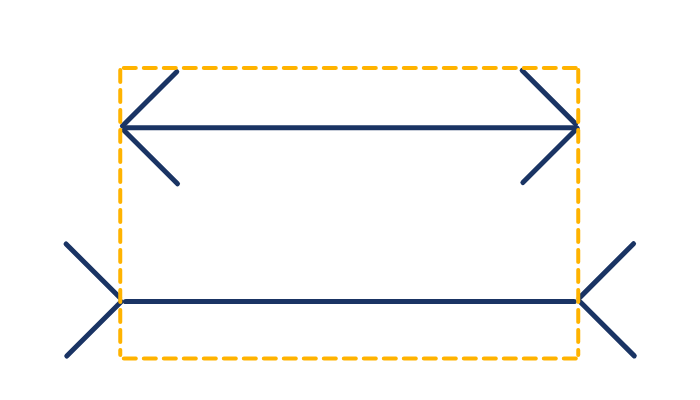Mental Heuristics
The human mind is not rational. A large part of the economy is run due to this irrationality. Think about why people are consuming alcohol, tobacco, etc. when they know it is injurious to health. Similarly, in businesses, perception is what drives a brand.
Long ago, Pepsi came up with a blind test in which it offered both Coke and Pepsi to people without letting them know which one was what. The results showed that people liked the taste of Pepsi more than Coke. However, Pepsi was still not able to beat Coke in terms of market share. This was because people were not drinking Coke for taste; they liked the feel associated with it.
Our brain is trained to process information much faster than required and ends up taking shortcuts. For example, see these two lines.

Which one appears longer? If your answer is the second one, you have fallen into the trap of mental heuristic. Both lines are actually of similar length, but the arrows are put in opposite directions.

In the world of stock markets as well, we take a lot of shortcuts in order to make our decision. Let's say you see a long queue outside Big Bazar one day and thinking the store must be doing well, you go and place a buy order for the stock. When in reality, there might be several reasons for this queue, there might be a technical glitch at the billing counter, or the customers have surrounded in order to return defective items and many more.
There are various types of heuristics (shortcuts) that we, as investors, make.
1. Availability Heuristic
We are more prone to base our decisions on recent or simple to recall events than on other, more complex events. What directs us is the flow of information around us. In bull markets, we generally have all positive news, making investors bullish. Similarly, bear markets have all negativity, creating a fearful investment environment.
2. Representative Heuristic
We often relate the likelihood of one event to the occurrence of another. For example, when Infosys posts good margins, the entire IT sector booms.
3. Saliency Heuristic
We overreact to a one-in-a-million event. An airplane crash is a very rare event. However, we see a spike in travel insurance policies post such an event. In stock markets, we overreact to good quarters and bad quarters, thinking that this is the beginning of a trend.
4. Overconfidence
Parekh advises young investors to respect the markets. Markets are interesting because we cannot understand them. Investment performance is due to the stock’s performance, not necessarily the individual’s ability. The ability is tested over many market cycles.
5. Anchoring and Adjustment
Anchoring bias is when an investor is attached to a particular price point. Let's say a stock touches ₹1500 in the past and is now quoting at ₹1000; investors would believe that it's a bargain because the investor is anchored to the high of ₹1500. However, what if, even at ₹1,000, it was overvalued? Therefore, it is prudent to understand the valuations and fundamentals and not be anchored to a particular price.
6. Herd mentality
History says that investors buy stocks with reasonable due diligence, but selling is based on herd mentality when friends or brokers tell them to exit the stock due to an impending crisis. The fear propagates undue selling. On the other hand, when the stock market is in a bubble, most of the purchases are because the neighbor or friend became rich by investing in the stock market. This, in turn, is herd mentality and is most often followed by a burst.
7. Pattern Recognition
In Pattern recognition, investors extrapolate a good result to be an indicator of the future trend. This might not always be rational, as financial results are a product of both external and internal factors, which are not always guided by a set pattern.
In this chapter, the author has introduced us to the majority of the biases that remained post the four main biases of Loss Aversion, Sunk Cost Fallacy, Decision Paralysis and Endowment effect. From the next chapter onwards, he explains how to invest in the market in order to outperform.


